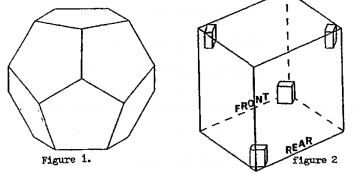Imagine if there was a way of listening to recorded sound that placed you inside a 360-degree sonic sphere, so your ears received information coming from all directions, not just from two speakers in front. That could emulate the natural mechanisms our brain uses to situate us in space, and give us a more convincing, immersive and therefore emotive musical experience.
There is such a system; it is called ‘Ambisonics’.
Developed in the mid-1970s by a small group of British academics, notably Michael Gerzon of the Mathematical Institute, Oxford and Professor Peter Fellgett of the University of Reading, the system was designed to reproduce recordings made with a purpose-built ‘Soundfield’ microphone or mixed in 3-D surround, using their own bespoke technology, and reproduced over a minimum of four speakers. In essence, it can project an immersive surround image that contains the direction, distance and height of recorded sound.
‘Stereo’, or ‘binaural sound’ as patented in 1931 by EMI engineer Alan Blumlein, relies on the way the ears and brain interpret time differences between the two ears. However, the effect only gives a narrow impression of space, with little depth. It benefitted from over thirty years of development and experimentation before its final widespread adoption for recorded music in the late 1960s. Blumlein did intimate at the possibilities of more speakers in his original white paper.

Ambisonics is an extension of Blumlein's M&S stereo; its surround sound cousin– building on his ideas to capture and represent an entire three-dimensional sound field, and yet be compatible with stereo and mono; using just a four channel recording, proprietarily called 'B-Format'. It is not a channel dependant system, such as Dolby 5.1; but instead uses whatever speakers are present in a surround system (minimum of four, upwards), to project an image around the listener, that is decoded from B-Format. All speakers cooperate to localise a sound. While the speakers on the left push, those on the right pull. So, to reproduce height, you need speakers both above and below the level of the listeners' ears. In theory, the speakers can be placed anywhere as part of a virtual tetrahedral sphere (or more practically hemisphere, if you don't have a floating floor!).
The original system was possibly ahead of its time and, for practical reasons, not a commercial success. However, ambisonic techniques have now been adopted by Virtual Reality content platforms such as YouTube and Facebook as the default immersive audio format over headphones, and the system is seeing a resurgence in commercial research and development.
Further information can be found here:
http://www.ambisonic.net/
M.A. Gerzon, "Practical Periphony", Preprint 1571 of the 65th Audio Engineering Society Convention, London (1980 Feb.)